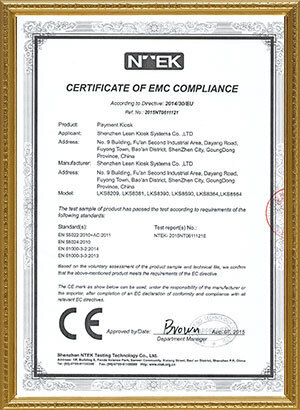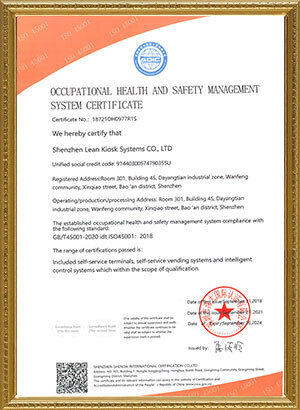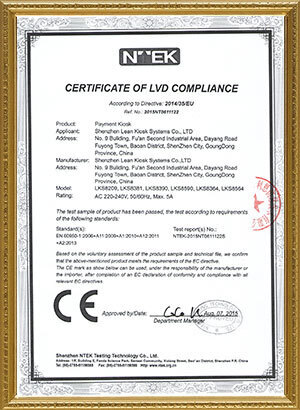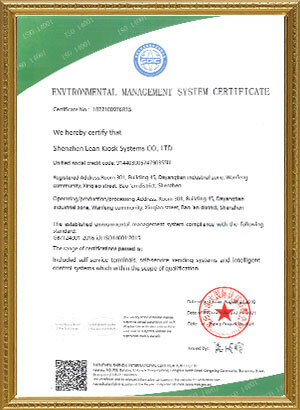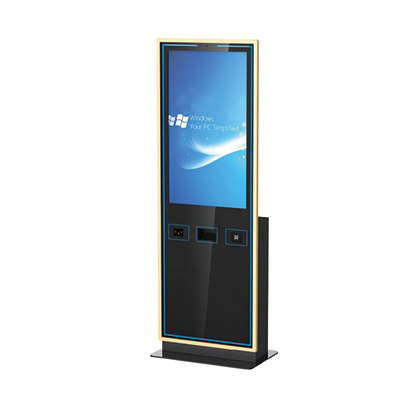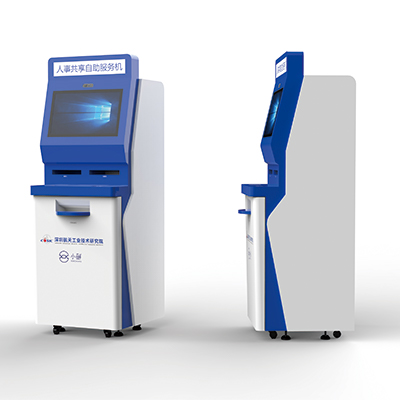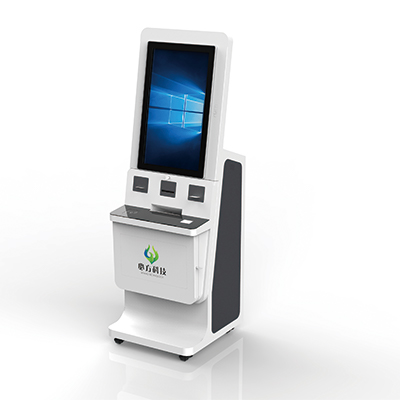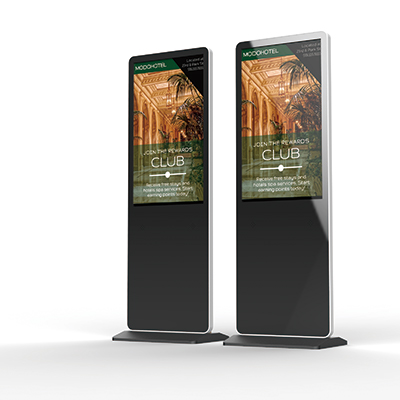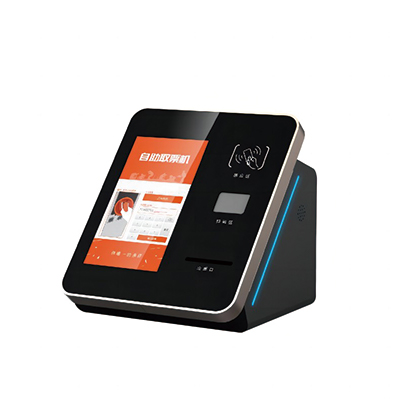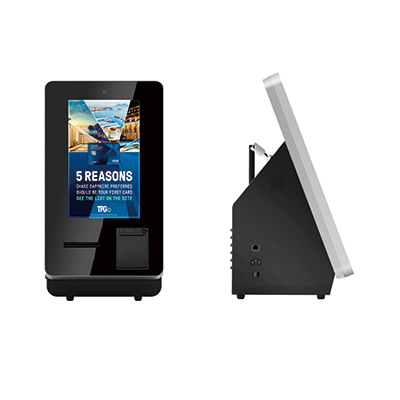






—— Bill from America
—— Jack from United Kingdom
—— James from Russia
—— Mike from America
—— James from Iran
—— James from America
Outdoor kiosks require materials that can withstand various weather conditions, provide durability, and ensure long-term functionality. Here are some common materials used for outdoor kiosks:
1. Metal:
o Stainless Steel: Known for its corrosion resistance and durability, stainless steel is suitable for outdoor kiosks in high-traffic areas. It requires minimal maintenance and provides a sleek appearance.
o Aluminum: Lightweight yet strong, aluminum is often used for outdoor kiosks due to its resistance to rust and ability to withstand exposure to elements. It can be powder-coated for additional protection and aesthetic customization.
2. Plastics:
o High-Density Polyethylene (HDPE): Durable, weather-resistant, and UV-stable, HDPE is commonly used for outdoor kiosks. It is lightweight, easy to clean, and can withstand exposure to moisture and sunlight without fading or warping.
o Acrylic (PMMA): Provides clarity and impact resistance. Acrylic is used for transparent panels or covers in outdoor kiosks, offering protection for displays and touchscreens while maintaining visibility.
3. Composite Materials:
o Fiberglass-Reinforced Plastic (FRP): Strong, lightweight, and resistant to corrosion, FRP is suitable for outdoor kiosks exposed to harsh weather conditions. It can be molded into various shapes and is low-maintenance.
o Aluminum Composite Panels (ACP): Consist of two thin layers of aluminum bonded to a non-aluminum core (such as polyethylene). ACPs offer durability, insulation, and a sleek finish, making them suitable for cladding and decorative purposes.
4. Wood:
o Hardwood: Some hardwoods, like teak or mahogany, can be used for outdoor kiosks due to their natural resistance to moisture and insects. They provide a warm, natural aesthetic but may require regular maintenance to preserve appearance.
o Pressure-Treated Wood: Treated to resist rot, decay, and insect damage, pressure-treated wood can be an economical option for outdoor kiosks in less demanding environments.
5. Glass:
o Tempered Glass: Strong and shatter-resistant, tempered glass is used for display windows or panels in outdoor kiosks. It provides visibility and protection against vandalism or impact.
6. Others:
o Concrete: Offers durability and stability, making it suitable for permanent outdoor installations. Concrete kiosks can withstand harsh weather conditions but are heavier and may require professional installation.
o Fabric Structures: Used for temporary or portable outdoor kiosks, fabric structures are lightweight, easy to transport, and can be customized with graphics. They are ideal for events, festivals, or seasonal installations.
When selecting materials for outdoor kiosks, it's important to consider factors such as weather resistance, durability, maintenance requirements, aesthetic appeal, and budget constraints. Combining different materials and finishes can help achieve the desired functionality and visual impact while ensuring longevity in outdoor environments.
Creating environmentally friendly and sustainable kiosks involves selecting materials and design practices that minimize environmental impact throughout the kiosk's lifecycle, from manufacturing to disposal. Here are key considerations and approaches to achieve sustainability in kiosk design:
1. Material Selection:
- Recycled Materials: Choose materials that incorporate recycled content, such as recycled metals, plastics (like recycled HDPE), or composite materials made from recycled fibers.
- Sustainable Wood: Use wood products certified by organizations like the Forest Stewardship Council (FSC), ensuring responsible forestry practices.
- Low-impact Materials: Opt for materials with low embodied energy and environmental impact, such as bamboo or rapidly renewable resources.
2. Energy Efficiency:
- LED Lighting: Use energy-efficient LED lights for displays and internal illumination to reduce power consumption.
- Low-Power Components: Select electronics and hardware with energy-efficient ratings to minimize energy use during operation.
- Solar Power: Incorporate solar panels where feasible to provide renewable energy for powering kiosks, reducing reliance on grid electricity.
3. Design for Durability and Longevity:
- Durable Materials: Choose materials known for longevity and resistance to wear and weathering, reducing the need for frequent replacement.
- Modular Design: Design kiosks in modular components that can be easily repaired or upgraded, extending their lifespan and reducing waste.
4. Resource Efficiency:
- Optimized Production Processes: Implement lean manufacturing practices to minimize material waste and optimize resource use during production.
- Water-based Finishes: Use water-based paints and finishes instead of solvent-based options to reduce VOC emissions and environmental impact.
5. Recyclability and Disposal:
- Design for Disassembly: Plan kiosks for easy disassembly and recycling at the end of their life. Use fasteners and materials that are recyclable or biodegradable.
- End-of-life Management: Partner with recycling programs or facilities to ensure components and materials are properly recycled or repurposed.
6. Certifications and Standards:
- LEED Certification: Design kiosks to meet Leadership in Energy and Environmental Design (LEED) standards for sustainability in construction and operation.
- Energy Star: Select energy-efficient components and equipment that meet Energy Star standards for reduced energy consumption.
7. Local Sourcing and Production:
- Regional Materials: Source materials locally to reduce transportation-related emissions and support local economies.
- Ethical Sourcing: Ensure materials are sourced from suppliers with ethical and sustainable practices, such as fair labor standards and environmental stewardship.
8. User Education and Engagement:
- Informational Displays: Use the kiosk interface to educate users about sustainability practices, environmental benefits, and how they can contribute to conservation efforts.
- Promote Recycling: Provide options for users to recycle waste generated from kiosk interactions, such as paper receipts or packaging materials.
By integrating these principles into the design and operation of kiosks, businesses can minimize their environmental footprint while providing sustainable solutions that contribute positively to the built environment and communities they serve.
Address: No. 99-15, Fuan intelligent manufacturing Industrial Park, Dayang Road, Fuhai Street, Baoan District, Shenzhen, China


